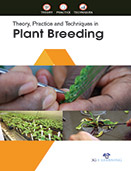Agriculture and Life Sciences

Agriculture is the deliberate planting and harvesting of plants and herding animals. This human invention has, and continues to, impact on society and the environment. To respond to the increasing need to feed the world’s population as well as an ever greater demand for a balanced and healthy diet there is a continuing need to produce improved new cultivars or varieties of plants, particularly crop plants. Despite advances in technologies, plant breeding is still based on Mendel’s original concept of inheritance which is extended to encompass the inheritance of quantitative and other complex traits. Plant breeding involves the systematic production of crop populations exhibiting genetic segregation and selection within that population to establish lines with favorable allele combinations. The most rudimentary forms of plant breeding likely originated during the transition of early human societies from hunter-gatherer groups to agrarian communities. However it has also been argued that forms of plant breeding occurred even before the human diet was based on cultivated crops, because many plants were used in medicinal or religious capacities, even during the nomadic periods of human pre-history. It is not then difficult to imagine that these plants were selected from local regions based on phenotypes deemed desirable for ceremonial and other purposes. As agriculture began to take hold and human populations increased, the most basic forms of plant breeding were employed as the most efficient calorie-conferring plant varieties were selected from wild stands, with seeds saved and replanted.
This book “Theory, Practice and Techniques in Plant Breeding” brings both theory and practice in modern plant breeding to illustrate the concepts outlined in the text. It covers the state of the art techniques of plant reproduction and their environmental interaction deliberating the current state of the field, as well as modern options and avenues for plant breeders and biotechnologists interested in augmenting crop yield and stability. Plant breeders specialize in breeding different groups of plants. Some focus on field crops, horticultural crops, ornamentals, fruit trees, forage crops, or turf species. More importantly, breeders tend to focus on specific species in these groups. This way, they develop the expertise that enables them to be most effective in improving the species of their choice. The principles and concepts discussed in this book are generally applicable to breeding all species.